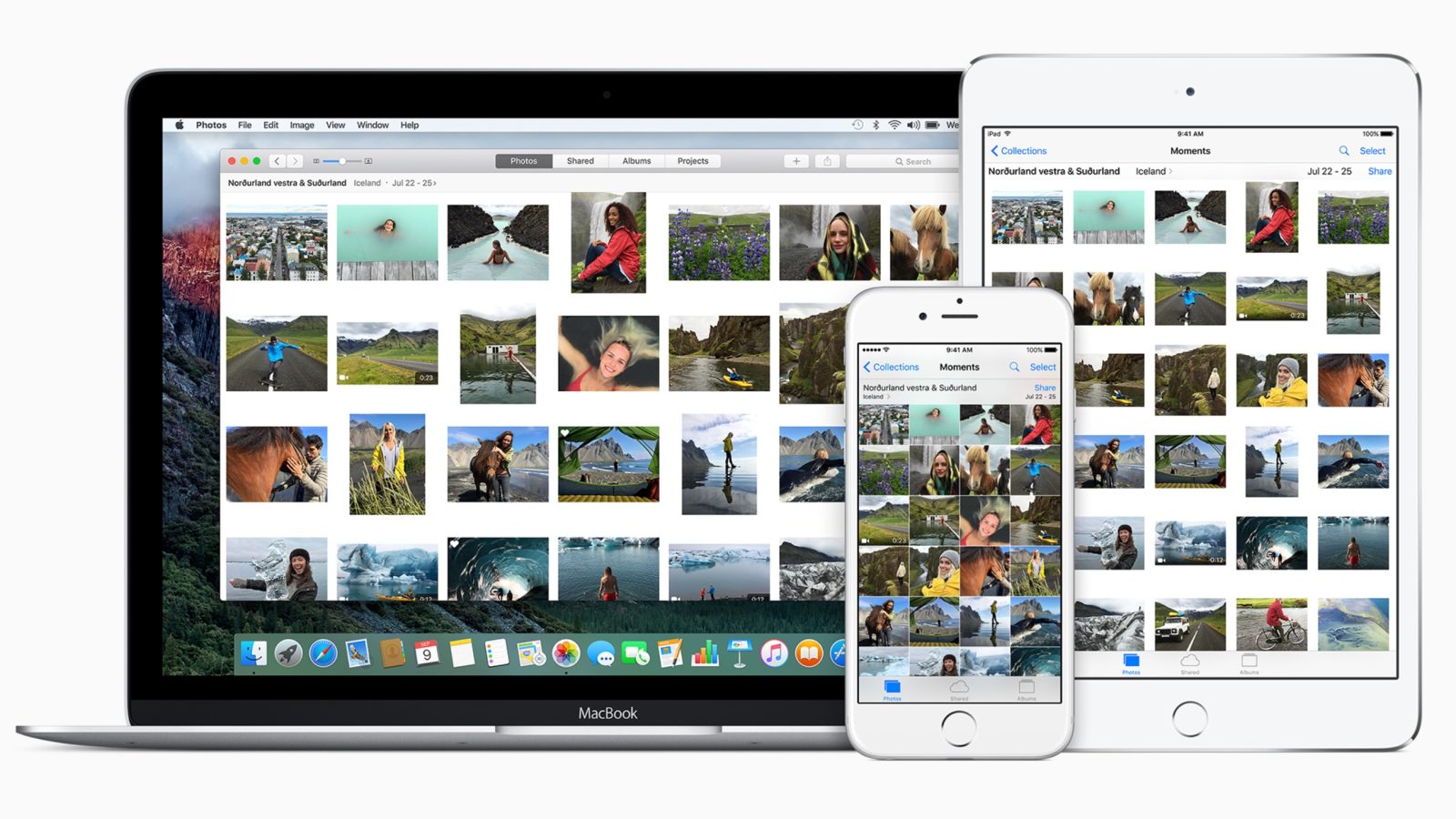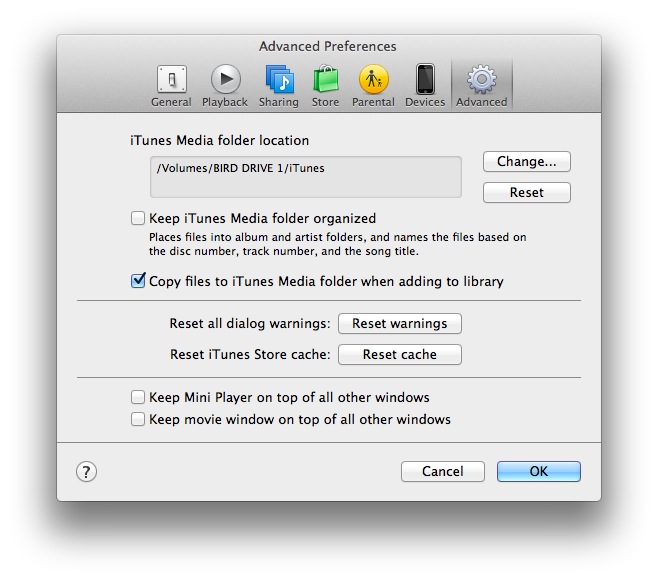The Sound Library contains all the sounds for the software instruments included with Logic Pro and MainStage. If you've installed Logic Pro and MainStage on the same Mac, both apps share the same Sound Library. When you move the Sound Library, it moves the Sound Library for both apps.
Only the Sound Library is moved—Apple Loops, Impulse Responses, and third-party content stay in their original locations on your Mac. If you want to move third-party content, check with the manufacturer for their recommendations.
Move the Sound Library to an external drive
Open a new Finder window and click Pictures in the left sidebar. Click and drag the iPhoto Library file onto the external hard drive icon on your Desktop. Depending on how large your library is and the connection speed of the external drive, it may take several minutes. Aug 24, 2015 To test this theory, I deleted my iPhoto library on my other Mac to see how much storage was freed up. For those wondering, my iPhoto library was 35.99 GB and my Photos library was 41.16 GB. You can see the before and after results on my hard disk space below. I was able to. Nov 10, 2019 To store and use your iTunes library on an external hard drive, do the following. (on a Mac) or a file called iTunes library.itl. While using your iTunes library on an external hard drive can be very convenient in terms of freeing up disk space, it also has some drawbacks. To deal with them, here are some tips you'll want to keep in mind. Sep 26, 2014 In this video we explain how to install KOMPLETE Libraries on an external hard drive on Mac OS X. 'Installing KOMPLETE Libraries on an External Hard Drive (W.
You can move the Sound Library to an external drive from Logic Pro or MainStage. You can store libraries on an external storage device such as a Thunderbolt drive, a USB drive, or a FireWire drive formatted as APFS or MacOS Extended (Journaled). You can’t store your library on an external drive or other disk used for Time Machine backups.
- Make sure you're logged in to your Mac as an administrator.
- Connect an external drive to your Mac.
- Open Logic Pro, then choose Logic Pro X > Sound Library > Relocate Sound Library, or MainStage > Sound Library > Relocate Sound Library.
- In the window, select the drive where you want to store the Sound Library, then click Relocate. A notification appears when the Sound Library has moved.
You can't share a Sound Library between Mac computers. If you have more than one Mac running Logic Pro or MainStage, each Mac needs its own Sound Library.
Don't rename the external drive after you've moved your library. If you do, Logic Pro and MainStage won't be able to find the Sound Library.
Move the Sound Library back to your Mac
After you've moved the Sound Library to an external drive, you might want to move it back to your Mac. For example, you might have a performance and you don't want to bring an external drive.
- Choose Logic Pro X > Sound Library > Relocate Sound Library, or MainStage > Sound Libary > Relocate Sound Library.
- In the window, select Macintosh HD, then click Relocate.
Download additional content

When you download additional Sound Library content for Logic Pro or MainStage from Apple, it's installed in the new location. To download additional content, choose Logic Pro X > Open the Sound Library, select the content you want to download, then click Install. Or, to install all content, click Select All Uninstalled, then click Install.
If the drive with the Sound Library is disconnected
If you open Logic Pro or MainStage without the external drive containing the Sound Library, you can choose what you want to do.
- To open Logic Pro or MainStage and use the Sound Library on the external drive, connect the external drive and click Retry.
- To continue to use the app without the Sound Library content, click Ignore. Any tracks with content from the missing Sound Library will be replaced with basic tones.
- To install the Sound Library on your Mac, click Reset, then click Reset again. Logic Pro or MainStage will use the Sound Library on your Mac. Later, you can move the Sound Library back to your external drive.
Optimized Storage in macOS Sierra and later* can save space by storing your content in iCloud and making it available on demand. When storage space is needed, files, photos, movies, email attachments, and other files that you seldom use are stored in iCloud automatically. Each file stays right where you last saved it, and downloads when you open it. Files that you’ve used recently remain on your Mac, along with optimized versions of your photos.
* If you haven't yet upgraded to macOS Sierra or later, learn about other ways to free up storage space.
Find out how much storage is available on your Mac
Hard Disk Library Machine
Choose Apple menu > About This Mac, then click Storage. This is an overview of available storage space on your Mac, as well as the space used by different categories of files:
Click the Manage button to open the Storage Management window, pictured below. (The Manage button is available only in macOS Sierra or later.)
Hard Disk Icon On Mac
Manage storage on your Mac
The Storage Management window offers recommendations for optimizing your storage. If some recommendations are already turned on, you will see fewer recommendations.

Store in iCloud
Click the Store in iCloud button, then choose from these options:
- Desktop and Documents. Store all files from these two locations in iCloud Drive. When storage space is needed, only the files you recently opened are kept on your Mac, so that you can easily work offline. Files stored only in iCloud show a download icon , which you can double-click to download the original file. Learn more about this feature.
- Photos. Store all original, full-resolution photos and videos in iCloud Photos. When storage space is needed, only space-saving (optimized) versions of photos are kept on your Mac. To download the original photo or video, just open it.
- Messages. Store all messages and attachments in iCloud. When storage space is needed, only the messages and attachments you recently opened are kept on your Mac. Learn more about Messages in iCloud.

Mac Hard Disk Repair
Storing files in iCloud uses the storage space in your iCloud storage plan. If you reach or exceed your iCloud storage limit, you can either buy more iCloud storage or make more iCloud storage available. iCloud storage starts at 50GB for $0.99 (USD) a month, and you can purchase additional storage directly from your Apple device. Learn more about prices in your region.
Optimize Storage
Click the Optimize button, then choose from these options.
- Automatically remove watched movies and TV shows. When storage space is needed, movies or TV shows that you purchased from the iTunes Store and already watched are removed from your Mac. Click the download icon next to a movie or TV show to download it again.
- Download only recent attachments. Mail automatically downloads only the attachments that you recently received. You can manually download any attachments at any time by opening the email or attachment, or saving the attachment to your Mac.
- Don't automatically download attachments. Mail downloads an attachment only when you open the email or attachment, or save the attachment to your Mac.
Optimizing storage for movies, TV shows, and email attachments doesn't require iCloud storage space.
Empty Trash Automatically
Empty Trash Automatically permanently deletes files that have been in the Trash for more than 30 days.
Reduce Clutter
Reduce Clutter helps you to identify large files and files you might no longer need. Click the Review Files button, then choose any of the file categories in the sidebar, such as Applications, Documents, Music Creation, or Trash.
You can delete the files in some categories directly from this window. Other categories show the total storage space used by the files in each app. You can then open the app and decide whether to delete files from within it.
Learn how to redownload apps, music, movies, TV shows, and books.
Where to find the settings for each feature
The button for each recommendation in the Storage Management window affects one or more settings in other apps. You can also control those settings directly within each app.
- If you're using macOS Catalina, choose Apple menu > System Preferences, click Apple ID, then select iCloud in the sidebar: Store in iCloud turns on the Optimize Mac Storage setting on the right. Then click Options next to iCloud Drive: Store in iCloud turns on the Desktop & Documents Folders setting. To turn off iCloud Drive entirely, deselect iCloud Drive.
In macOS Mojave or earlier, choose Apple menu > System Preferences, click iCloud, then click Options next to iCloud Drive. Store in iCloud turns on the Desktop & Documents Folders and Optimize Mac Storage settings. - In Photos, choose Photos > Preferences, then click iCloud. Store in iCloud selects iCloud Photos and Optimize Mac Storage.
- In Messages, choose Messages > Preferences, then click iMessage. Store in iCloud selects Enable Messages in iCloud.
- If you're using macOS Catalina, open the Apple TV app, choose TV > Preferences from the menu bar, then click Files. Optimize Storage selects “Automatically delete watched movies and TV shows.”
In macOS Mojave or earlier, open iTunes, choose iTunes > Preferences from the menu bar, then click Advanced. Optimize Storage selects “Automatically delete watched movies and TV shows.” - In Mail, choose Mail > Preferences from the menu bar, then click Accounts. In the Account Information section on the right, Optimize Storage sets the Download Attachments menu to either Recent or None.
Empty Trash Automatically: From the Finder, choose Finder > Preferences, then click Advanced. Empty Trash Automatically selects “Remove items from the Trash after 30 days.”
Other ways that macOS helps automatically save space
With macOS Sierra or later, your Mac automatically takes these additional steps to save storage space:
- Detects duplicate downloads in Safari, keeping only the most recent version of the download
- Reminds you to delete used app installers
- Removes old fonts, languages, and dictionaries that aren't being used
- Clears caches, logs, and other unnecessary data when storage space is needed
How to free up storage space manually
Even without using the Optimized Storage features of Sierra or later, you can take other steps to make more storage space available:
- Music, movies, and other media can use a lot of storage space. Learn how to delete music, movies, and TV shows from your device.
- Delete other files that you no longer need by moving them to the Trash, then emptying the Trash. The Downloads folder is good place to look for files that you might no longer need.
- Move files to an external storage device.
- Compress files.
- Delete unneeded email: In the Mail app, choose Mailbox > Erase Junk Mail. If you no longer need the email in your Trash mailbox, choose Mailbox > Erase Deleted Items.
Learn more
Mac Hard Drive Recovery
- When you duplicate a file on an APFS-formatted volume, that file doesn't use additional storage space on the volume. Deleting a duplicate file frees up only the space required by any data you might have added to the duplicate. If you no longer need any copies of the file, you can recover all of the storage space by deleting both the duplicate and the original file.
- If you're using a pro app and Optimize Mac Storage, learn how to make sure that your projects are always on your Mac and able to access their files.